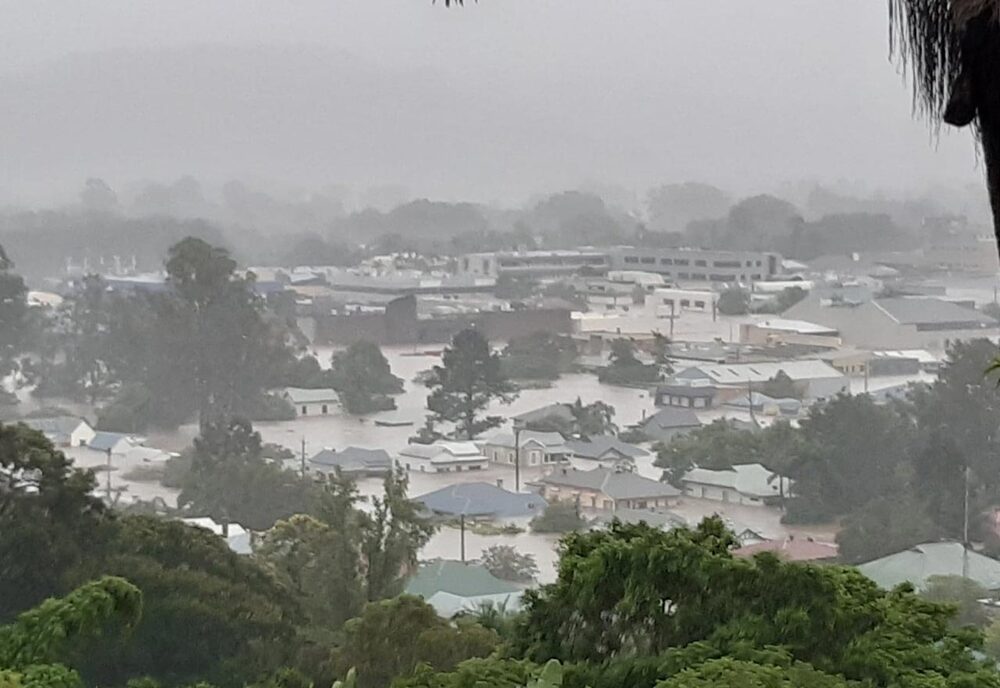Lismore urban area loses estimated 566 residents between June 2022/23
Simon Mumford
27 March 2024, 8:00 PM
 Premier Chris Minns, Member for Lismore Janelle Saffin and Minister for Planning Paul Scully walk the Crawford Road Resilient Land development in early February.
Premier Chris Minns, Member for Lismore Janelle Saffin and Minister for Planning Paul Scully walk the Crawford Road Resilient Land development in early February. One of the many asked questions following the February 2022 flood was what would happen to Lismore's population in the short term. As expected Lismore is estimated to have lost residents.
The Australian Bureau of Statistics (ABS) released its Estimate Resident Population data on Tuesday. It said the population of Australia’s capital cities grew over 500,000 in the year ending June 2023, the largest annual growth recorded by the ABS.
Beidar Cho, ABS head of demography said: “Australia's capital cities grew by a record 517,200 people last financial year, with this growth largely driven by net overseas migration.”
Melbourne (up 167,500) and Sydney (up 146,700) had the biggest increase in 2022-23, with Perth and Brisbane each also adding over 80,000 people. Along with Adelaide (28,100), these five cities had their largest annual population growth since the start of the series in 1971.
Perth had the highest growth rate (3.6 per cent), followed by Melbourne (3.3 per cent) and Brisbane (3.1 per cent).
The growth rate for the capitals combined was 3.0 per cent, more than double the growth rate for regional Australia (1.4 per cent).
Lismore's estimated population for the urban area showed a decline of 3.8% or 566 people on June 30 2023. The 2022 population was 14,903 and the 2023 population was estimated to be 14,337.
The data is broken down into geographical areas referred to as Statistical Area Level 2 (SA2). Lismore LGA has three SA2 areas – Lismore (which encompasses the Lismore urban area), Goonellabah, and Lismore Surrounds (which encompasses Lismore’s rural areas).
For the Lismore Surrounds area, the numbers were in positive territory with 121 new residents (15,855 to 15,976) for a growth rate of 0.8% while Goonellabah had 82 new residents or 0.6%.
The rest of the Northern Rivers saw growth except for Casino itself where the population decreased by 99 (-0.8%). Richmond Valley grew by 0.4%, Ballina 0.9%, Bangalow 1.8%, Lennox/Skennars Head 2.7%, Byron Bay 1.3% and Kyogle was steady.
A Lismore City Council spokesperson said the decrease can be seen as a direct result of the 2022 floods, as the Lismore SA2 area contains areas of flood-prone residential land where many homes have become uninhabitable and/or have been purchased by the NSW Reconstruction Authority (NSWRA).

(The view from Girards Hill on March 1 2022)
"Despite the decrease in population due to the 2022 floods, Council continues to plan for growth. Lismore saw increases in population in both the Goonellabah and Lismore Surrounds SA2 areas between 2022 and 2023.
"Council is involved in several projects to drive growth and increase housing supply in the local government area. This includes a planning proposal at 1055 Bruxner Road that could provide up to 1000 new dwellings; and the NSWRA Resilient Lands Initiative project with Southern Cross University that could deliver more than 400 dwellings at East Lismore.
"We anticipate a significant uplift in our population and economy due to the construction workers needed as we rebuild and deliver the significant infrastructure pipeline. Furthermore, the proposed expansion of the university research footprint in Lismore is expected to generate further population growth.
"As Lismore is the regional service centre, its growth is integral to the wider region’s development. As such, Lismore will proportionally increase in population, especially in sectors serving jobs, such as aged care and healthcare. This anticipated growth highlights a pressing need to address the impact on housing demand for the region."
There were no surprises in the ABS estimate, although it never makes good reading. However, the future does look bright with more and more land being announced for development. As Mayor Steve Krieg has said previously, Lismore's rebuild is about a ten-year project and we are only two years into the rebuild.

